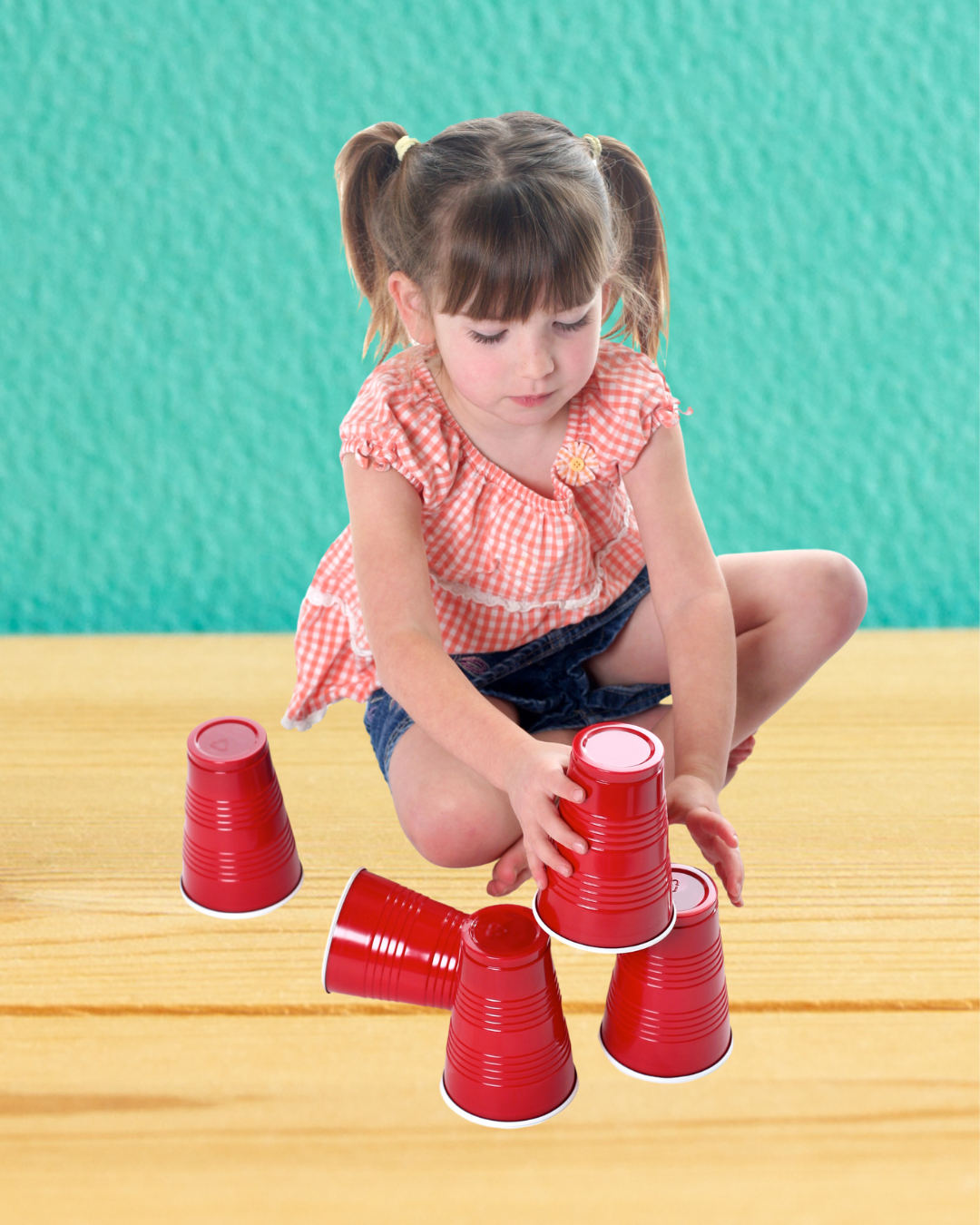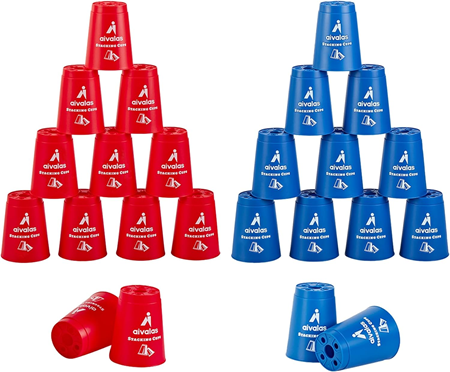iYou might be suprised to learn that cup stacking offers a ton of therapeutic benefits, especially for kids! Let’s explore why this simple yet engaging activity is a valuable tool in occupational therapy.
1. Fine Motor Skills Development
Cup stacking is fantastic for building fine motor skills. As kids grasp and maneuver the cups, they strengthen the muscles in their hands and fingers. This is especially beneficial for children who may be developing their grip and dexterity.
2. Hand-Eye Coordination
One of the key skills involved in stacking cups is hand-eye coordination. As kids focus on aligning the cups while manipulating them, they enhance their ability to coordinate what they see with their hand movements. This skill is crucial for everyday tasks like writing, cutting and buttoning shirts.

3. Spatial Awareness
Cup stacking also helps to build spatial awareness. Children learn to understand how to position the cups in relation to one another, which helps them develop a sense of balance and organization. This awareness can be beneficial in various activities beyond stacking.
4. Focus and Concentration
In today’s fast-paced world, the ability to concentrate is vital. Stacking cups encourages sustained cognitive and visual attention, as kids focus on the task at hand to avoid toppling their creations. This practice can translate into improved focus in academic settings and daily life.
5. Problem-Solving Skills
Every stacking session presents unique challenges. Deciding how to stack the cups efficiently can encourage critical thinking and problem-solving. Participants may need to try different strategies to achieve a specific design or height, which fosters creativity and resourcefulness.

6. Bilateral Coordination
Many cup stacking techniques require the use of both hands, promoting bilateral coordination. This means that both sides of the body work together, enhancing overall coordination and motor planning. This is great for building left-brain/ right-brain connections.
7. Sensory Processing
The tactile experience of handling various cups—whether they are plastic, paper, or foam—engages the senses and helps with sensory processing. This is particularly important for individuals who may be sensitive to different textures and weights.
Use my special coupon to save $27.00 USD:
MISSJAIMEOT27
The special coupon code expires October 31, 2024
8. Social Interaction
Cup stacking can easily be turned into a group activity, promoting social skills and teamwork. As children work together, they develop communication skills, turn-taking and learn how to collaborate effectively.
Every stack has its challenges, and sometimes the cups will fall! This aspect of the activity teaches individuals how to manage frustration and build resilience. Learning to cope with setbacks is a valuable life skill.
10. Fun and Motivation
Last but not least, cup stacking is simply fun! Its playful nature makes it an enjoyable activity, which increases motivation and engagement in therapeutic settings. When individuals enjoy what they’re doing, they are more likely to stick with it and benefit from the experience. All children (and adults) benefit from PLAY.
Conclusion
Cup stacking may seem like just a game, but it has a TON of therapeutic value. From developing fine motor skills to enhancing social interaction, this versatile activity supports a wide range of developmental goals. So the next time you see a stack of cups, remember that they’re not just for play—they’re a powerful tool for growth and learning in occupational therapy!


We have the kids stack the cups and then throw pumpkins or other seasonal/holiday things at them to knock down.